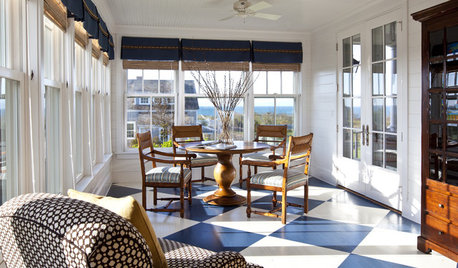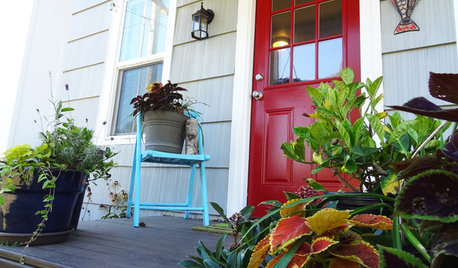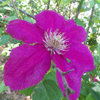Okay. This is a big question, so I may divide it into parts: this is the first part. First, I've had clematis in my gardens for twenty years, so I'm not totally ignorant about them, but neither am I well informed either from reading or from experience. I'm thinking of making a large order (perhaps twenty plants) from a specialist nursery this fall, and getting varieties selected or hybridized from several different species, many of which I've never seen or grown. I would like to get an idea of what kind of conditions different kinds of clematis like, and will describe the different parts of my garden, and how the clematis I have grown have behaved. By the way, I normally frequent the antique rose forum, but occasionally wander into other forums when I have a big question.
I live in the northern foothills of the Apennines of Italy. Our property faces south; most of it is sunny and exposed to wind. We're in zone 7-8, with mild, chilly, wet winters and dry summers, hot during the day, fresher at night. We don't water during dry periods once plants have been in the ground for a year. The soil in the big/sunny part of the garden is deep, very heavy clay, poor in organic matter and apparently of roughly neutral ph. I don't fertilize, but keep a permanent mulch of hay on the beds, plus whatever other organic matter I can get hold of. All the garden is steeply sloping, and I rarely have problems with drainage in spite of the heavy soil. Plants that do well there include once-blooming and mild climate old roses, tall bearded irises, lilacs, spring-flowering bulbs, aromatic plants like lavender and rosemary, peonies in the moister and shadier areas, privets, honeysuckles, mock orange.
The shade garden is cooler, moister, and in part to full shade. We had extensive flooding down the drainage in the middle of it a few years ago that brought down great quantities of organic matter from a fenced area for cattle above; and this drainage turns into a swamp during wet weather in fall through early spring. In this garden Gallicas and Hybrid Musk roses do particularly well, as do peonies, yew, box, mahonia, spring bulbs. The roses tolerate a lot of wet when they're dormant, but mostly we plant the other plants in those parts of the garden that aren't a seasonal swamp.
So, the clematis. I planted 'Lord Nevill' in the large sunny garden and it has done quite well, developing slowly as isn't surprising with no summer water. It's about four years old now and had an excellent flowering this year in spite of a dry spring. Other clematis planted in this garden in the last two or three years have included C. viticella rubra, 'Mrs. Chomondeley', 'Star of India', 'Jackmanii', 'Gillian Blades' and 'Pink Fantasy', plus a couple I lost from planting them in spring shortly before the summer drought. Two plants of C. alpina has gone into some cooler and shadier areas and seem to be happy with their situation. My current idea is that if the clematis can get through the first year they seem to take kindly to the big garden, heavy soil, summer drought and all.
The shade garden seems to be more problematic. 'The President' and 'Marie Boisselot' never grew much in the several years they were there; 'Mme. Julia Correvon' is tolerably happy; and 'Jackmanii' and two other clematis opposite it on a trellis, another 'The President' and a lavender kind with early double flowers, are still struggling after several years in place. There's a C. integrifolia in a sunny place with good soil that's happy. I've planted several Clematis montana varieties, always in spring (this isn't my preference but it's when local nurseries carry clematis) in the woods, and have lost them all. There's one survivor in a semi-sunny area.
In another garden area in part shade, 'Etoile Violette' does reasonably well in a rather dry and shady position; in heavier soil 'Polish Spirit' grows but doesn't bloom much; and the C. texensis hybrid 'Duchess of Albany', in place for several years, grows and flowers poorly. 'Polish Spirit' may be suffering root competition.
So I'm not sure what conclusions to draw from all this, and would like your ideas on what clematis like. Viticella and Texensis hybrids and cultivars; pruning class II hybrids; C. alpina and C. macropetala, and do they have similar requirements?; C. heracleifolia forms and hybrids; C. integrifolia forms and hybrids; C. tangutica; and others. As you can see I'm ready to wallow in clematis starting this fall, but it would be helpful to know of any things absolutely not to do. About our temperatures, we have enough winter chill for lilacs and tulips and apples, but can also grow olives in warmer spots in the garden. So we have winter chill but the temperatures don't fall all that low.
To anyone who has made it this far, thanks for your patience! I look forward to your insights and counsel.
Melissa

















gardengal48 (PNW Z8/9)
buyorsell888
Related Professionals
Fillmore Landscape Architects & Landscape Designers · Foothill Ranch Landscape Architects & Landscape Designers · Kenmore Landscape Architects & Landscape Designers · Otsego Landscape Architects & Landscape Designers · Prairie Ridge Landscape Architects & Landscape Designers · Barrington Landscape Contractors · Damascus Landscape Contractors · Dinuba Landscape Contractors · Eustis Landscape Contractors · Fairview Landscape Contractors · Farmington Landscape Contractors · Longmont Landscape Contractors · Maywood Landscape Contractors · New Cassel Landscape Contractors · Saint George Landscape Contractorsmichael_in_chicago
melissa_thefarmOriginal Author